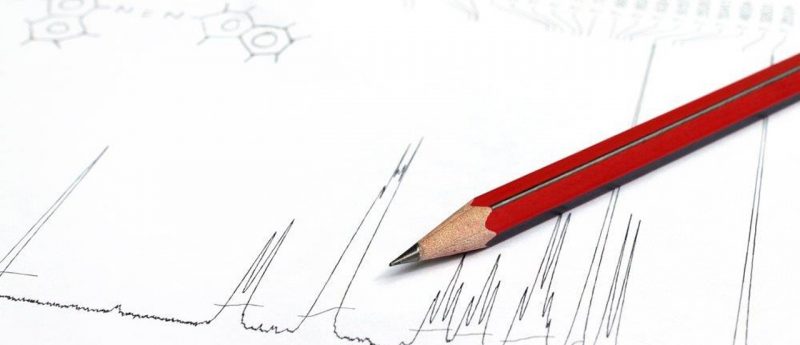Robert MacNeill: separation anxiety

In this column instalment from Robert MacNeill (Covance, NJ, USA), he explores chromatographic separation and how sometimes tweaking the conditions of the existing setup is proving fruitless.
Robert MacNeill received his Bachelor’s degree with Honors in Chemistry from Heriot Watt University then his MSc in Analytical Chemistry from the University of Huddersfield, both in the United Kingdom. Robert is also a Chartered Chemist and a Fellow of the Royal Society of Chemistry. With 22 years of experience in all aspects of quantitative bioanalytical LC–MS/MS method development, 13 of these years heading method development activities within the Princeton site that has housed HLS/Envigo (now Covance), and a regular author and peer reviewer for the journal Bioanalysis, Robert is a recognized expert and innovator in the field.
I’m surprised the title of this article isn’t more of a cliché among chromatographers, but here I shall use it unapologetically, even compound it in a questionable manner with some figurative chromatography language. With that, we can migrate into the heart of the article and disperse, and let’s certainly maintain the flow away from that little void of an introduction. Within our usual setting of a quantitative bioanalytical method development with an LC−MS endpoint, and project timelines not-with-standing, let us ponder how ensconced and frustrated we should become over the chromatographic separation that we can almost obtain but remains elusive. It will depend on the challenge at hand, of course, but here I would like to encourage the flexibility to jump to a different avenue of selectivity in cases where a separation is necessary and tweaking the conditions of the existing setup is proving fruitless.
Selectivity, the key parameter leading to robust methodologies, arises from the power to separate. Discriminating power, if you will. The kind of mass spectrometric detectors at our fingertips these days are wonderful things and, with the considerable selectivity that they confer, do so often serve to obviate specific chromatographic separation needs. Nonetheless, we are frequently faced with challenges that require this very nature of separation. Chiral methodologies are perhaps the most obvious example. We also have isobaric analytes, which are almost always isomeric in nature, also metabolites which can pop up in our ion channels in various ways and are of fantastic importance, not to mention areas of response suppression or enhancement that we need to steer clear of. With all of that being said, it’s pretty safe to say that most occurrences of being in such a chromatographic pickle, needing to just pry two peaks apart to then have the entire method be sound, relate to the separation of isomers. Cue thoughts of delicate differences in shape, functional group exposure and effect on chemistries, possibly switching up wholesale in terms of physicochemical environment to bring an impactful result, a segue to the intended message of this article.
In my experience, to improve the separation using the same underlying chromatographic selectivity is often not a great solution. Usually, we are left uncomfortable contemplating an extended run time and broader peaks, with reduced signal-to-noise implications, or we have precariously high back-pressure, despite having made the key separation a little more convincing. This may have been achieved possibly due to a little tweaking of organic/aqueous levels at key points, or often having selected a longer column, maybe also adjusting the column temperature a little, reducing the particle size or moving to superficially porous particle technology or taken the latter further, to a more potent reduced shell depth where the pore length is similarly reduced.
This article is part of Robert MacNeill’s quarterly column for Bioanalysis Zone, which focuses on quantitative method design. Click here to read past instalments of the column!
To progress from this realm, we may do more compelling things like switch up the organic modifier for an alternative of different chemistry, like protic to aprotic, or move to a possibly more potent aqueous modifier pH and perhaps also adjust the ionic strength. These two options, especially the pH tool, have more potential for making the selectivity switch favorably, handing resolution swiftly to the gleeful chromatographer. Sometimes, it must be said, even temperature alone can bring a pronounced change. Also, we can change the stationary phase to a similar but distinct chemistry, often considering phase density and pore diameter too and be met with sufficiently positive results. With these options we can begin to really be able to go where we need to go and we are making more fundamental selectivity adjustments in order to attain this. I know, it may not seem attractive at first, having worked hard to establish the chromatography and there is only one apparently minor tweak to apply, but in the long run it will likely be fruitful.
Then, to move up a level, there is nearly always the possibility of making sweeping selectivity changes, even more potent and exciting. By this I am referring to changing the fundamental mode of chromatography, when it can feasibly be done. Such as reversed-phase to HILIC or aqueous normal phase in some manifestation, or of course the other way around. It will take a moment of careful thought to initially gauge the feasibility of making the switch, but as I have dwelt on in previous writing, it’s a lot about anticipating solubility behavior and use of charge or otherwise. Thinking hydrophobicity and polarity, carbon skeleton or biological sequence characteristics, non-ionized but polar functional groups, and then the important electrostatic aspects, so looking at ionic moieties that can be switched on or off to best suit our chromatographic needs.
In any case, the best answer to the so-close but elusive peak separation situation may well be a marked selectivity change instead of spending a long time tweaking a given setup and then accepting a less-than-ideal long-term outcome. The concept of choosing selectivity as a variable, rather than adjusting the likes of column length or particle size, can indeed be underlined using that all-important resolution equation involving theoretical plate count, retention factor and selectivity, in terms of the impact on resolution of altering each of the three parameters, although there is no room to delve in there within this piece. It would be an article in itself. Suffice to state that selectivity is a profoundly important tool at our fingertips, and let’s not be afraid to take leaps when appropriate and when the confidence in our chemistry is there.
Disclaimer: the opinions expressed are solely my own and do not express the views or opinions of my employer.
The opinions expressed in this feature are those of the author and do not necessarily reflect the views of Bioanalysis Zone or Future Science Group.



